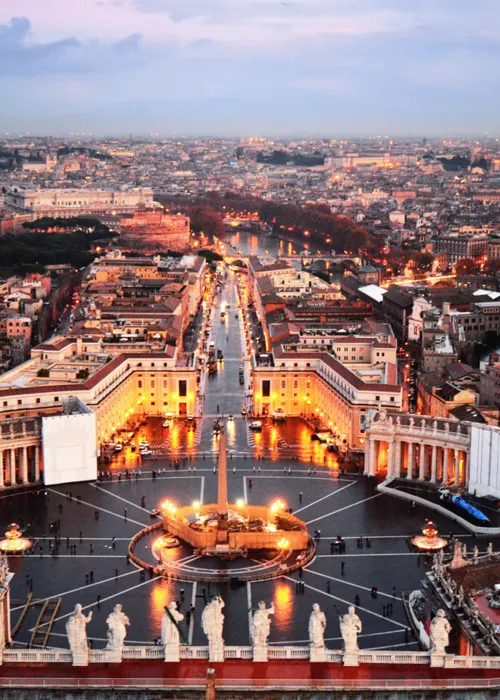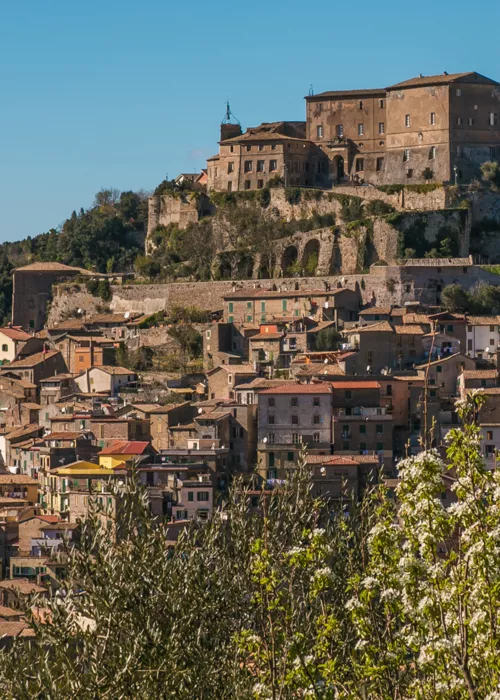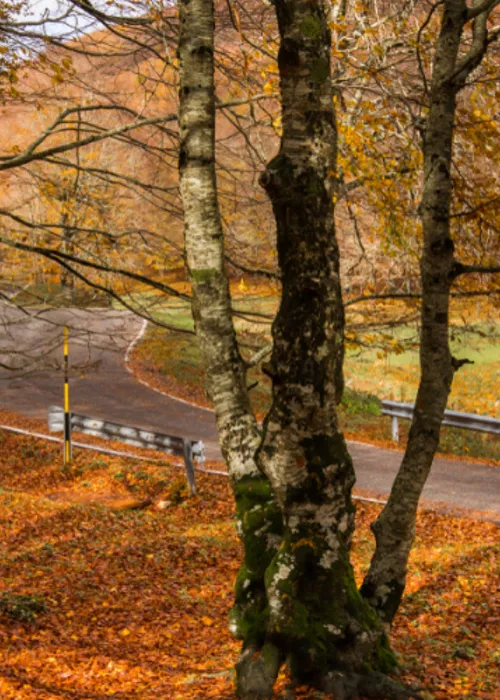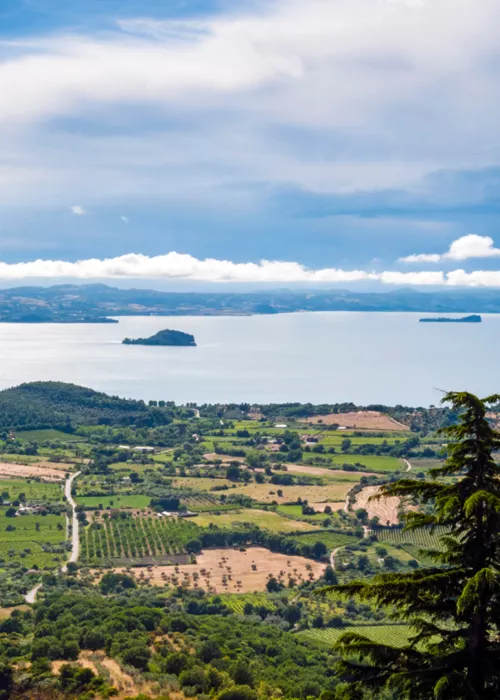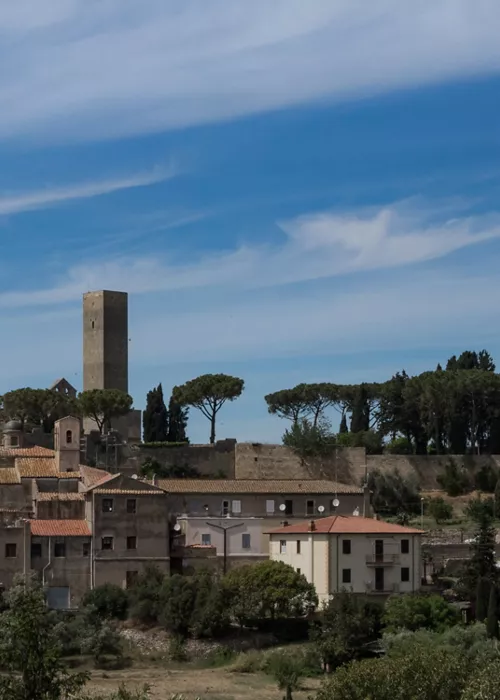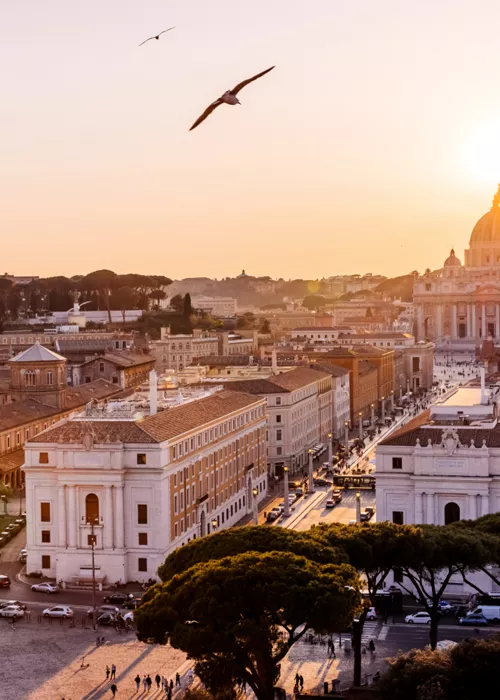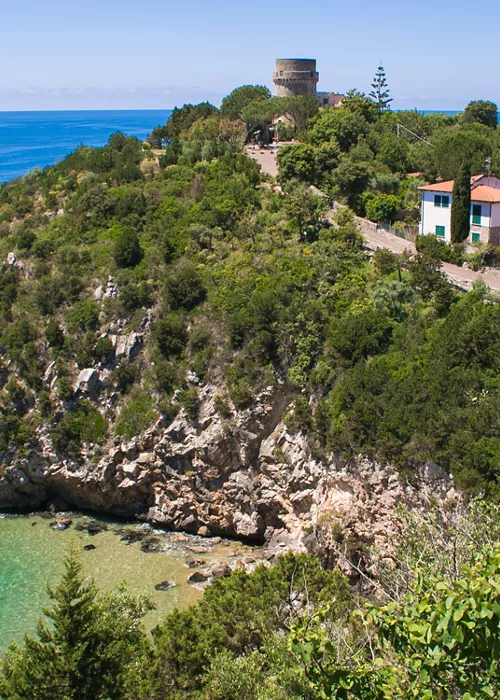Colosseum

Iconic, the Colosseum is undoubtedly one of the most fascinating monuments in Rome. It may be because of its majesty, its incredibly intact structure, the fury and brutality that took place there in Rome's founding days. Here, where gladiators fought to the last breath and condemned men fought ferocious beasts, today more than 10 million tourists a year pour in. Built by Emperor Vespasian, it was inaugurated after his death in 80 AD, with the name of the "Flavian Amphitheatre" (named after the Flavians, a family to which Vespasian and his sons Titus and Domitian belonged). It began to be called the Colosseum only in the Middle Ages because of a huge statue next to it, the "Colossus of Nero", not because of its size. After the fall of the Roman Empire, the amphitheatre fell into a state of abandonment, in the Middle Ages, it became a fortress of the Frangipane and Annibaldi families, suffered damage from earthquakes and in the Renaissance became a marble and travertine quarry. Thanks to several restorations that were undertaken at various times, the Colosseum has returned to its former glory and is now a unique and rare scenic building that serves as a backdrop to cultural events. Next to the Colosseum is the wonderful Arch of Constantine, the last of the triumphal monuments of the classical age.
Basilica of San Clemente

Layer upon layer, the Basilica of San Clemente clearly illustrates Rome's long past. It dates back to the 12th century but was built on top of a 4th century church, itself erected on a 2nd-century temple dedicated to the God Mithras and a 1st-century Roman house. In addition to the charm of its history, San Clemente boasts truly enchanting interiors. In the upper basilica, on the ground floor, there is the wonderful mosaic "Triumph of the Cross", a crucifixion that is also somewhat of a tree of life. In the Chapel of Santa Caterina you can admire the frescoes by Masolino da Panicale depicting stories of the life of the saint. The lower basilica, dating from the 4th century and destroyed by the Normans in 1084, reveals traces of 11th-century frescoes with the life and miracles of San Clemente. Finally, we descend again to discover the Roman residence of the 1st century and the Mithraeum of the 2nd century with the bas-relief that recalls Mithras during the killing of the primordial bull.
Complex of the Four Crowned Saints

Of course, from the outside, it will not seem like a place of worship, perhaps more like a medieval fortification, but upon entering the Complex of the Four Crowned Saints, you will have no doubt as to its function and, even less, its beauty. Sober and full of mysticism, it is said to be dedicated to four soldiers (Severus, Severianus, Carpophorus and Victorinus) who were made martyrs for refusing to venerate the statue of Aesculapius. Another legend tells of five sculptors killed by Diocletian because they did not want to sculpt the statue. In any case, the complex, consisting of the basilica, the Chapel of San Silvestro and the Calendar Room, the thirteenth-century cloister and the Gothic Hall, is a true treasure trove of art. As is often the case, the site has had a troubled history. Founded in the mid-5th century AD on the remains of a Roman domus, it was expanded, destroyed and rebuilt several times. The church, with three naves, preserves the Cosmatesque floor and medieval and seventeenth-century frescoes. The Calendar Room and the Chapel of San Silvestro were part of the cardinal's palace erected by Stefano Conti in the mid-13th century. The first is named after the fresco that covers the walls (dating back to the first half of the 13th century) and which illustrates the calendar. The chapel, on the other hand, has a wonderful pictorial cycle with stories from the life of St. Sylvester. Finally, on the first floor of the building's Main Tower is the Gothic Hall, a room with Gothic forms and a lively painting cycle from the mid 13th century illustrating arts and months.
Piazza San Giovanni square in Laterano

The city's tallest and oldest obelisk, a Baptistery, the Scala Santa ("Holy Stairs") and the Sancta Sanctorum, the Lateran Palace and the Basilica of San Giovanni in Laterano are all here, in the immense, articulated and irregular Piazza San Giovanni square, offering a synthesis of the architectural culture that has shaped the eternal city from antiquity to the 20th century.
The Lateran obelisk has stood here since 1588, before then it could be found at the Circus Maximus. Built by Thutmose III, a pharaoh of the 18th Egyptian dynasty, it was transported to Rome from Thebes in 357 by Constantius II. This is the tallest Egyptian obelisk in the world (if you also count the cross and the base, it reaches almost 46 metres).
To the left of the obelisk stands the Lateran Palace, which was the official residence of the popes for around a thousand years, since the fourth century. Repeatedly damaged and restored, it was devastated by a fire in 1308. Thus, when the papacy returned to Rome in 1377 after the Avignonese captivity, the popes established their residence at the Vatican. What we see today is the result of an urban redevelopment at the end of the 16th century, designed by Domenico Fontana at the behest of Sixtus V. It was supposed to have been the papal summer residence, but the popes continued to prefer the Vatican and the Quirinal residences. The palace then became a hospital, archive of the Papal State, home to the Gregorian Museum and, finally, home to the Vicariate; since 1987, the main floor has housed the Vatican Historical Museum. Right on the corner of the Lateran Palace, if you look up you will notice two twin bell towers with triple lancet windows from the 13th century and spires from 1370: they emerge from the loggia of blessings of the Basilica of San Giovanni in Laterano. To the right of the loggia of blessings is the ancient Baptistery, erected in the fourth century by Constantine on top of a first-century villa and a second-century spa building.
Another place can be found here, a symbol of deep devotion and a place of pilgrimage. We are talking about the 28 steps that compose the Scala Sancta (Holy Stairs) of the Pontifical Shrine, decorated with frescoes on the walls and in the vaults. The steps are the same ones that, it is said, Jesus climbed several times on the day of his death sentence in Pontius Pilate's palace in Jerusalem, brought to Rome by St. Helena in the 4th century. Visit on Good Friday of Lent and you can witness or participate in the touching ascent of the faithful on their knees in an act of devotion or request for plenary indulgence. It is this staircase that will lead you to the Sancta Sanctorum, the chapel of the popes in which the image of the Holy Saviour is venerated.
Finally, at 1700 years old, the great Basilica of San Giovani in Laterano, Rome's cathedral, is undoubtedly a must-see destination for the faithful and tourists alike for its majestic interior and the solemn atmosphere you can experience once you enter.
Basilica of St John Lateran

The Basilica of St John Lateran, the oldest of the four papal basilicas and the cathedral and episcopal see of Rome, is considered the "mother and head of all the churches in Rome and in the World". It was built on the same site as the basilica erected by Constantine in the 4th century, although very little remains of the original construction. Its current appearance dates largely from the 17th century and the baroque style of the interior is mainly the work of Francesco Borromini.
The imposing late Baroque façade, surmounted by 15 statues 7 metres in height (Christ, St John the Baptist, St John the Evangelist and the Doctors of the Church), is the work of Alessandro Galilei (a relative of Galileo Galilei) and was completed in 1735. Behind the columns of the portico, the central bronze door is the legacy of the ancient Curia Julia in the Roman Forum, while the last one on the right is the Holy Door, opened only in Jubilee years.
Inside, a true spectacle awaits. The interior features a gilded coffered ceiling, a 15th-century Cosmatesque floor and a large central nave, flanked by the colossal statues of the apostles, made in the 18th century. At the end of the nave is the elaborate Gothic tabernacle, which, according to tradition, houses the relics of the heads of Saints Peter and Paul. At the other end, on the first pillar along the right-hand aisle, can be seen what little remains of a fresco by Giotto.
If you are in Rome during the Jubilee, know that St John Lateran, together with St Peter's in the Vatican, St Mary Major, St Paul Outside the Walls, St Lawrence Outside the Walls, Holy Cross in Jerusalem and St Sebastian Outside the Walls, is one of the stations in the Pilgrimage of the Seven Churches, a spiritual journey started by St Philip Neri in the 16th century.









